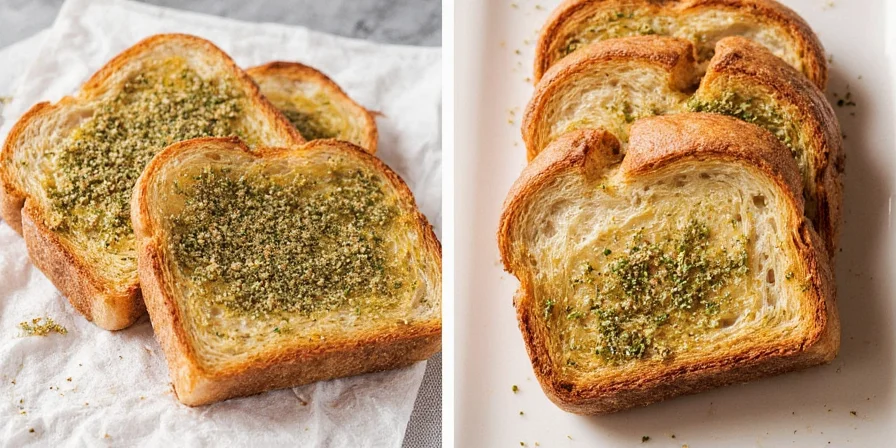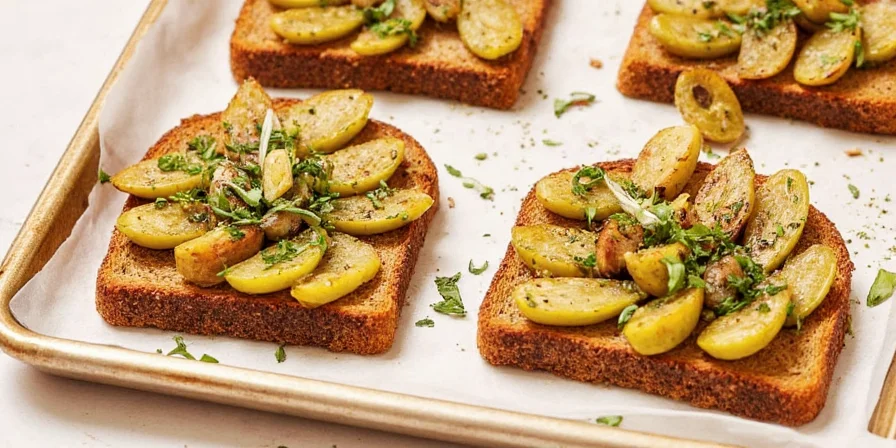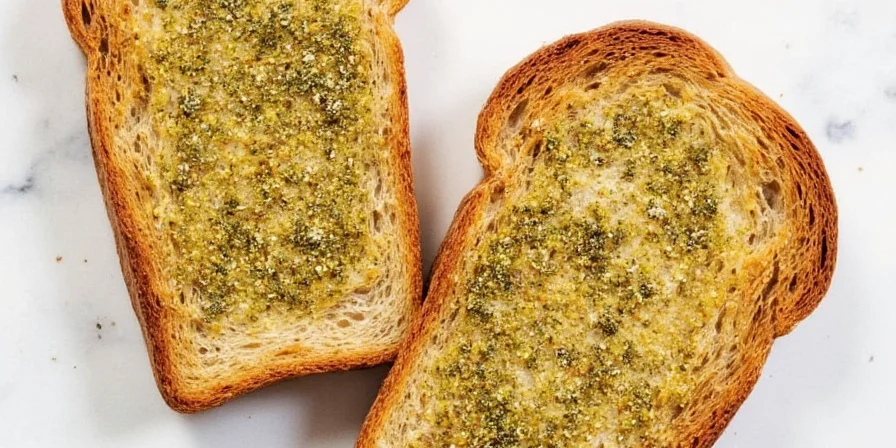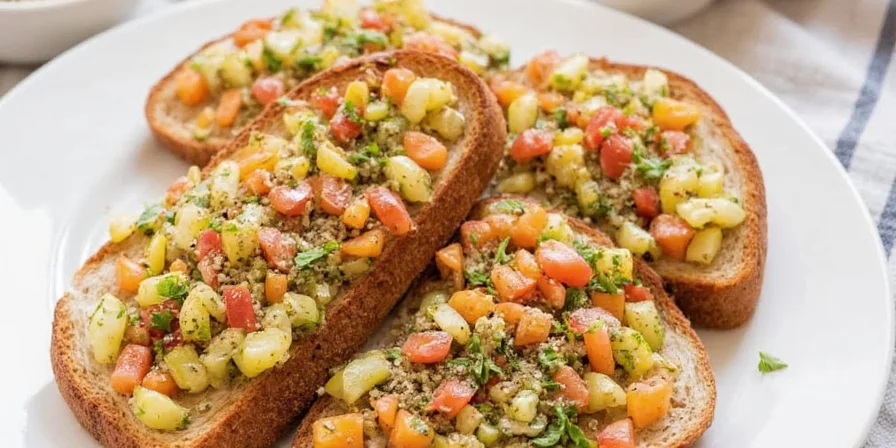For home cooks seeking to transform everyday meals with minimal effort, za'atar offers a quick path to gourmet flavors. This ancient Middle Eastern spice blend elevates simple bread into a centerpiece with restaurant-quality results in under 10 minutes. Whether you're a busy parent needing breakfast solutions or a culinary explorer, these pairings deliver consistent satisfaction through za'atar's unique balance of earthy, tangy, and nutty notes.
Traditionally used across the Levant for centuries, za'atar's global popularity stems from its versatility beyond flatbreads. Modern chefs in Tel Aviv and Brooklyn now pair it with sourdough rye and gluten-free alternatives, proving its universal adaptability. In this guide, you'll discover why it's the secret weapon for effortless meal upgrades—and exactly how to implement it.
Table of Contents
- What Exactly Is Za’atar?
- Why Za’atar Loves Bread So Much
- Top 7 Za’atar & Bread Pairing Ideas
- Pro Tips: Taking Za’atar to the Next Level
- Final Thoughts
What Exactly Is Za’atar?
Za’atar isn’t just one thing—it’s a blend of flavors that varies depending on where you are in the Middle East. The core ingredients typically include:
- Dried thyme or oregano – For that earthy herbal note
- Sesame seeds – Adds crunch and nuttiness
- Sumac – That tangy kick that wakes up your taste buds
- Salt – Because everything needs a little seasoning
In some regions, you might also find marjoram, hyssop, or even dried citrus peel thrown into the mix.
Note on authenticity: Many commercial blends substitute wild thyme with oregano. For traditional flavor, seek blends labeled with "wild thyme" or "hyssop" and deep red sumac—key indicators of quality.
A Flavor Profile Breakdown
| Flavor Component | Description |
|---|---|
| Herbaceous | From thyme and marjoram |
| Tangy | Thanks to sumac |
| Nutty | The toasted sesame seeds add depth |
| Salty | Brings balance and enhances other flavors |

Photo: A simple sprinkle of za’atar over warm pita bread is all it takes.
Why Za’atar Loves Bread So Much
Bread is the perfect canvas—it absorbs oils, holds spices, and becomes a flavor carrier. When you pair za’atar with different types of bread, you unlock a whole new dimension of taste. Here’s why it works so well:
- Pita: Pockets of joy ready to be stuffed (or just ripped open and dipped)
- Flatbread: Ideal for drizzling olive oil and sprinkling za’atar
- Sourdough: Bold enough to stand up to za’atar’s punchy flavor
- Ciabatta: Crispy crust + soft interior = za’atar heaven
Za'atar's versatility extends beyond traditional applications. Its balanced profile enhances non-traditional breads like sourdough rye through complementary flavor chemistry—earthiness from roasted grains pairs perfectly with thyme's herbal notes, while sumac's acidity cuts through dense textures.

Photo: Warm pita brushed with olive oil and dusted with za’atar.
Top 7 Za’atar & Bread Pairing Ideas
We’ve saved the best part for now. These creative twists deliver consistent results with minimal technique—perfect for time-pressed home cooks.
1. Za’atar + Olive Oil Drizzle
The classic combo—and for good reason. Simply dip or brush warm bread in extra virgin olive oil, then sprinkle generously with za’atar.
2. Za’atar & Hummus Toast
Spread thick hummus on sourdough, top with za’atar, a drizzle of olive oil, and a few pine nuts. Toast under the broiler for extra warmth.
3. Za’atar Popcorn Topping
Sprinkle za’atar over freshly popped popcorn for a savory, spicy snack. Serve with crusty bread on the side for dipping—this fusion approach leverages za’atar’s umami depth beyond traditional applications.
4. Za’atar Butter
Mix softened butter with za’atar, lemon zest, and a touch of garlic. Spread on warm baguette slices or grilled focaccia for an instant flavor boost.
5. Za’atar Yogurt Dip
Mix plain Greek yogurt with za’atar, a splash of lemon juice, and a pinch of salt. Use it as a dip for breadsticks or as a topping for flatbreads.
6. Za’atar-Cheese Melt
Take a piece of manchego or halloumi cheese, sandwich it between two slices of ciabatta, and sprinkle the outside with za’atar before grilling. The result? Magic in your mouth.
7. Sweet & Savory Za’atar Twist
Brush brioche with melted za’atar-infused honey butter and grill until golden. The floral sweetness balances sumac's tartness—a technique pioneered by pastry chefs in Beirut to bridge cultural flavor expectations.

Photo: Za’atar butter on warm bread for a next-level breakfast.
Popular Za’atar & Bread Combos at a Glance
| Combination | Main Ingredients | Flavor Type | Prep Time |
|---|---|---|---|
| Za’atar & Olive Oil | Za’atar, olive oil, any bread | Simple, rustic, earthy | 5 mins |
| Za’atar Butter | Za’atar, butter, lemon zest | Rich, aromatic | 10 mins |
| Za’atar Hummus Toast | Hummus, za’atar, sourdough | Smooth, bold, creamy | 8 mins |
| Za’atar Cheese Melt | Za’atar, cheese, ciabatta | Savory, melty, indulgent | 12 mins |
| Za’atar Honey Butter | Za’atar, honey, butter, brioche | Sweet, salty, unique | 7 mins |
Pro Tips: Taking Za’atar to the Next Level
- Prioritize freshness – Store za'atar in an airtight container away from light. Stale blends lose vibrancy within 3 months; fresh za'atar should have deep green color and sharp citrus aroma from sumac.
- Toast your za’atar – Lightly dry-roast the spice blend for a deeper aroma.
- Add fresh herbs – Mix chopped parsley or cilantro into za’atar butter for freshness.
- Infuse your oil – Heat olive oil with za’atar for 10 minutes, strain, and store for future use.
- Play with texture – Add crushed pistachios or pumpkin seeds to za’atar for a crunchy twist.

Photo: Za’atar butter melting into a warm slice of crusty bread.

Photo: A colorful setup with za’atar, olives, dips, and fresh bread.
Final Thoughts
Za’atar on bread is more than a trend—it’s a flavor revolution wrapped in simplicity. Whether you're craving something sweet, savory, crunchy, or creamy, there’s a za’atar pairing that fits the bill.
Don’t be afraid to experiment. This spice blend is incredibly versatile and can elevate everything from your everyday toast to dinner party appetizers. Now go ahead—grab that jar of za’atar and start turning ordinary bread into extraordinary bites.
Frequently Asked Questions
Can I make za'atar at home?
Yes. Combine 2 tablespoons dried thyme, 1 tablespoon sumac, 1 tablespoon toasted sesame seeds, and 1 teaspoon salt. For authenticity, add 1 teaspoon dried marjoram. Use fresh ingredients for best results.
What bread works best with za'atar?
Za'atar shines on breads with neutral flavors and good texture. Try pita, sourdough, or focaccia. For gluten-free options, use dense rice-based flatbreads that hold the spice blend well without becoming soggy.
How long does homemade za'atar last?
Store in an airtight container away from light for up to 6 months. Discard if the color fades significantly or the aroma becomes flat—fresh za'atar should have vibrant green tones and a sharp citrus scent from quality sumac.











 浙公网安备
33010002000092号
浙公网安备
33010002000092号 浙B2-20120091-4
浙B2-20120091-4